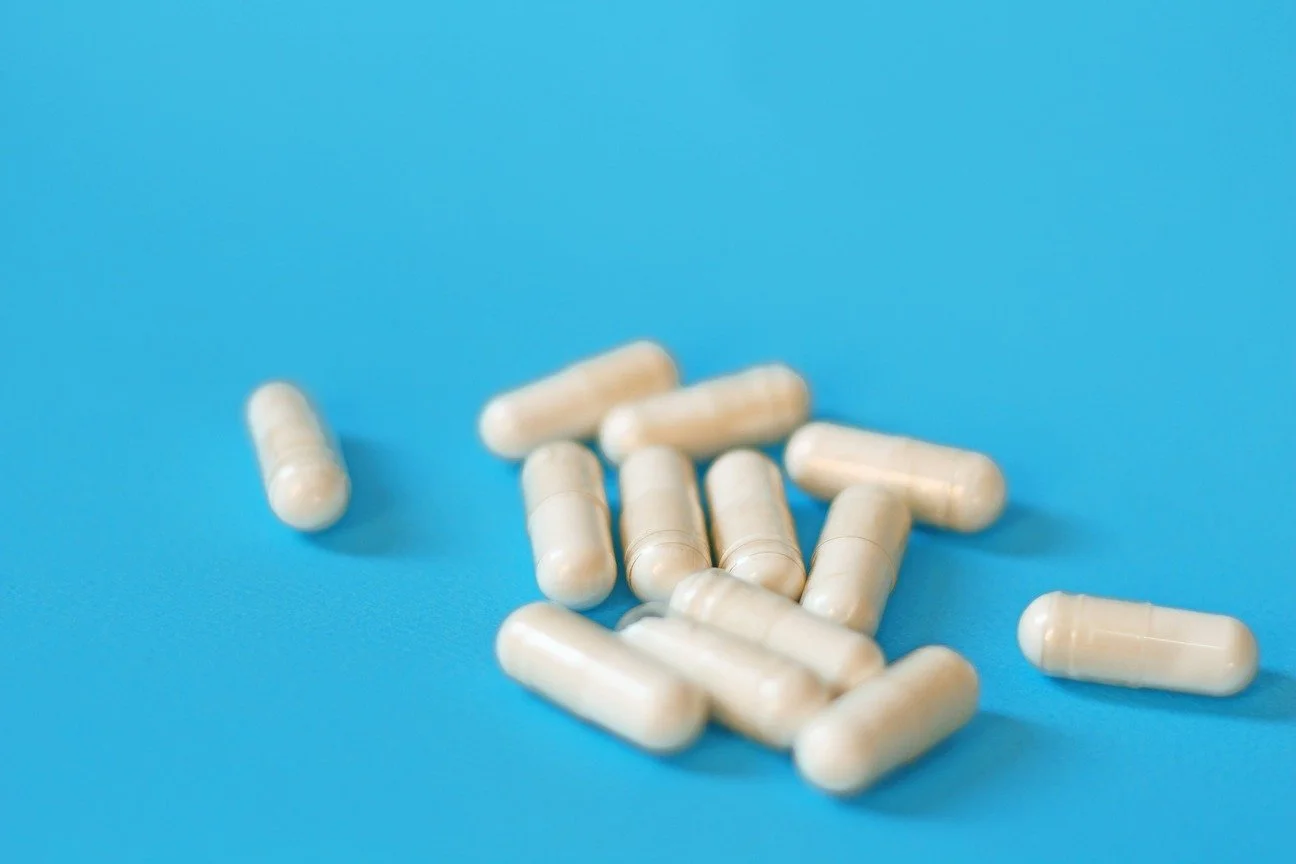What Conditions Does Monolaurin Help With? Research Insights
Disclaimer: The research below is offered for information and educational purposes only and is not intended to provide medical advice. See Terms & Conditions
Monolaurin & Research insights
Article Summary
This article offers an in-depth, research-based exploration of monolaurin, a naturally occurring compound derived from lauric acid and its studied interactions with the immune system and microbial balance. Readers will gain insight into:
What monolaurin is and its natural sources, including coconut oil and human breast milk.
Laboratory research on monolaurin’s ability to interact with lipid-coated microorganisms, including recent studies on viruses and bacteria [Ref #1], [Ref#3].
Comparison with prescription antivirals such as acyclovir and valacyclovir, including differences in mechanism, scope, and intended use.
Potential complementary role of monolaurin when used alongside medical treatments, with examples from immune support strategies.
Wellness applications in contexts like herpes simplex virus (HSV), shingles (VZV), and Epstein–Barr virus (EBV), framed within an immune health perspective.
Long-term use considerations, safety, and discussion with healthcare professionals before integrating monolaurin into a regimen.
Practical tips for supporting immune function through nutrition, lifestyle, and supplementation.
Monolaurin is a monoglyceride, a molecule formed when lauric acid is bound to glycerol. Lauric acid naturally occurs in coconut oil and human breast milk, where it is thought to play a role in protecting infants from certain microorganisms [Ref #4].
Laboratory research has examined monolaurin’s potential effects against lipid-coated viruses and bacteria organisms that have an outer layer (envelope) made of lipids (fats). In vitro and animal studies suggest monolaurin may disrupt the lipid membranes of these microbes, affecting their structure and function [Ref #1], [Ref#3].
Note: “Lipid-coated” means the pathogen has a fatty outer shell, which in lab experiments can sometimes be disrupted by certain fatty acids or their derivatives.
Does Monolaurin Help with Cold Sores, Herpes, and Shingles?
Cold sores (HSV-1), genital herpes (HSV-2), and shingles (caused by reactivation of VZV) are all lipid-coated viruses. Monolaurin has been studied in laboratory environments for its ability to affect similar viral envelopes [Ref #1], [Ref #2]. For example, a 2023 study found in vitro and in vivo antiviral activity of monolaurin against Seneca Valley virus, supporting the idea that lipid envelope disruption may be part of its action [Ref #1].
However:
No human clinical trials currently confirm monolaurin as a treatment for herpes or shingles.
In wellness discussions, it is considered a dietary supplement for immune system support, not a drug.
Read more: Monolaurin: Benefits, uses, forms, and side effects
Monolaurin for Epstein–Barr Virus: Can It Support Recovery?
Epstein–Barr virus (EBV) the virus behind infectious mononucleosis, is another lipid-coated member of the herpesvirus family. Laboratory studies suggest monolaurin can affect lipid-coated viruses in general [Ref 2, 3].
While monolaurin is not an EBV treatment, it is sometimes discussed in immune-support strategies. The focus is on supporting the body’s own defenses during and after viral exposure.
How Do Prescription Antivirals Work?
Prescription antivirals like acyclovir and valacyclovir work by interfering with the virus’s ability to replicate its DNA, lowering viral load and reducing outbreak severity [Ref #4]. These medications are FDA-approved for specific viral infections and must be prescribed by a healthcare professional.
How Does Monolaurin Compare to Acyclovir or Valacyclovir?
Key differences:
| Feature | Prescription Antivirals | Monolaurin |
|---|---|---|
| Mechanism | Blocks viral DNA replication | Disrupts lipid membranes (in vitro) |
| Approval | FDA-approved drug | Dietary supplement under DSHEA |
| Use | Treat specific viral infections | Immune & microbial balance support |
| Evidence | Robust clinical trials | Mostly lab & animal studies |
Can You Replace Your Prescription with Monolaurin?
No. You should never replace a prescribed antiviral with a supplement without medical guidance. Monolaurin is not an FDA-approved alternative to antiviral medication.
Are There Benefits to Combining Monolaurin with Medication?
Some people under professional supervision use monolaurin alongside antivirals. The goal is complementary support, not substitution. Research on such combinations is limited, but interest remains due to monolaurin’s potential in microbial balance.
Which is Better for Long-Term Use?
Antivirals: Used for specific durations or as suppressive therapy, always under medical direction.
Monolaurin: May be used longer-term as part of immune health strategies, but safety and dosage should be discussed with a healthcare provider [Ref 4].
Does Monolaurin Help with Cold Sores?
Cold sores are caused by HSV-1. Monolaurin’s laboratory research on lipid-coated viruses makes it relevant to the discussion, but no human clinical evidence confirms it can treat or prevent cold sores.
Does Monolaurin Help with Shingles?
Shingles comes from VZV reactivation. While monolaurin is relevant in lab research on lipid-coated viruses, it is not an established therapy for shingles.
Can Monolaurin Help with Epstein–Barr Virus?
EBV is lipid-coated and related to other viruses studied in monolaurin research. Its potential role is adjunctive in immune wellness, not a cure.
Final Thoughts
Monolaurin is a fascinating natural compound with decades of lab research exploring its interactions with lipid-coated microbes. While it is not a replacement for antiviral therapy, it can be considered as part of a holistic immune-support approach under professional guidance.
Read more: Monolaurin inhibits antibiotic-resistant Staphylococcus aureus in…
Interested in trying monolaurin?
Consider some of the products located on this external site:
References
Henriksson K, et al. In vitro and in vivo antiviral activity of monolaurin against Seneca Valley virus. Front Vet Sci. 2023. doi:10.3389/fvets.2023.980187
Subroto T, Indiarto R. Bioactive monolaurin as an antimicrobial and its potential to improve…. Food Research. 2020;4(6):2355–2365. doi:10.26656/fr.2017.4(6).324
Carpo BG, Verallo-Rowell VM, Kabara JJ. Novel Antibacterial Activity of Monolaurin Compared with Conventional Antibiotics…. J Drugs Dermatol. 2007;6(10):991–998.
Maggini S, et al. Immune function and micronutrient requirements change over the life course. Nutrients. 2018;10(10):1531. doi:10.3390/nu10101531


